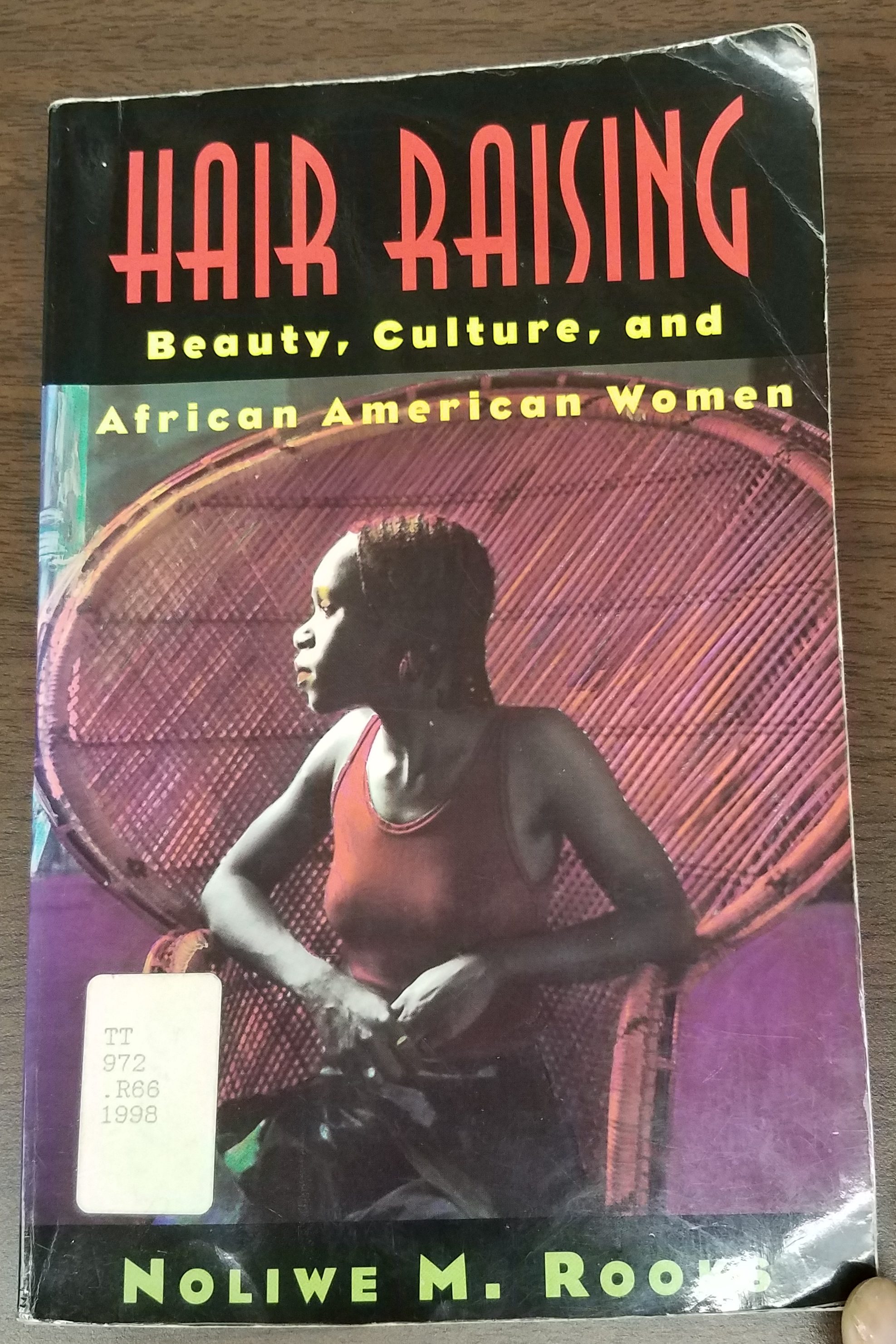“I came to realize the extent to which my hair bridged the space between personal identity and a larger social politic. Hair, I learned that year, is significant” (Rooks, 1998, p. 1)
I have finished gleaning information from Noliwe Rooks’ Hair Raising. Rooks explores the historical and cultural aspects of the politics of hair in the African-American community from the early 19th century to the 1990s. and I wanted to share some of the things that interested me the most from her book:
- “politics of acceptance” (4)
- What she is describing of the salon is an example of socialization. These series of experiences and interactions from which she learns her identity in the social world and how to norms and behaviors of the black female community
- Connecting to Adamu and Clark with the idea of the styling of hair as social, community-driven and based
- The intimacy of hair doing( washing and styling)
- Rooks points out that hair and the decisions around it not only point to a positioning in the white or dominant community, it also has one in the black community in relation to African-Americans
- “Its style could lead to acceptance or rejection from certain groups and social classes, and its styling could provide the possibility of a career” (6)
- Rook starts with setting up her own experiences with her hair and then broadened those experiences to include the wider society in order to see patterns and make sense of them
- In the 1970s with the rise of the Black Power Movement, hair became a symbol imbued with political meaning and associated with social change
- She reveals this discourse between pride and shame, integration/ assimilation and liberation in regards to black hair
- She gives rich descriptions about hair and the process of hairstyling. The time taken to conjure the imagery of hair constructs it as a character in a story
- She states that she uses ethnographic interviewing as one of her methods. She went to black hair salons and talked with the women there and got a sense of the social setting
- Would be interesting to attempt for my own senior project because it gives a visual to the text
- It adds meaning and evidence to the analysis
- Need to look into: “Straightening Our Hair” by bell hooks
- Viewing advertisements as a plausible inference about social thought of a period
- Hair straightening and natural hair caught in a matrix of gender, class, race, hair, and culture
- Straight hair as a point of respect and acceptance within the African-American middle-class
- Examines hair in African-American communities in the 19th century through advertisements, particularly looking at how Madam C.J. Walker revolutionized the black haircare industry
- Need to look into: beauty parlors in the 1830s (what did they say about haircare in that time)/ the function of beauty parlors in the African-American communities
- Rooks uses images, conceptualizing and anaylzing them, to gain insight into haircare in this period
Project Tracking
Dec. 1: Reading Hair Raising, 12:00-2:30
Dec. 2: Reading Hair Raising, 11:00-12:30
Dec. 3: Reading Hair Raising, 11:30-12:45
Dec. 4: Finishing Hair Raising and organizing notes, 3:15-5:00


